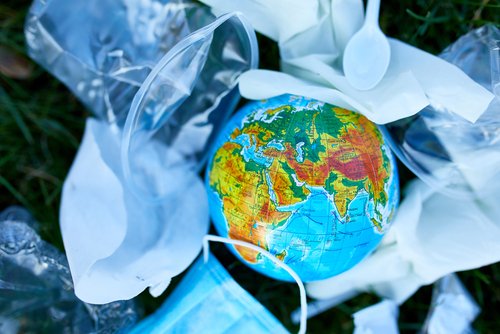Brussels (Brussels Morning) Plastics are the number one contributor to waste, making it an environmental priority for activists and governments alike. However, with the onset of Covid-19, we have put plastic waste concerns on the back burner – for good reason. We often need to think of solving the crisis in front of us before moving to the next. However, we can’t ignore the significant amount of medical waste created and discarded from the pandemic forever.
MedPageToday recently reported, “nearly 90% of the excess plastic waste generated during the pandemic came from hospitals.” In general, medical waste can be classified into five types: sharps (needles, scalpels), pathological (human or animal tissue), chemical (drugs or solutions), pharmaceutical, and radiation. Each type of waste presents its own challenges for disposal. The most concerning form of medical waste right now is plastic waste.
Plastic production has increased twentyfold in the last 50 years, and it is estimated that 8 million metric tons of plastic end up in the ocean every year. Plastic does not biodegrade; instead, it photodegrades, breaking down into smaller and smaller pieces called microplastics. These tiny particles are ingested by marine life, entering the food chain. Studies have shown that nearly 90% of seabirds have plastic in their guts. This is with our average production of plastic.
With the onset of Covid-19 and its stubborn resistance to go away, we have created a whole new category of plastic consumption and waste. To start, the production, consumption, and discarding of masks. Facial masks are made of cotton, spandex, and… plastic. They are not biodegradable. The output of facial masks has increased by 400% since the pandemic started. At the most conservative estimate, the average European will use and dispose of at least 1.5 masks per week. It is estimated that approximately 1.56 billion face masks ended up in the ocean in 2020. That’s a lot of plastic.
That number doesn’t even consider all the other types of medical plastic created and discarded during Covid-19: gloves, goggles, tubing, packaging, sutures, bandages. These items are all made from non-biodegradable materials and will sit in landfills and oceans for centuries.
Disposing of medical waste is already a challenge. The added burden of Covid-19 makes it even more difficult. First, all plastics used during Covid-19 are known as “single-use” plastics. Meaning there is no option for recycling.
While most of the waste is centralized to Asian and developing countries due to population, mismanagement, and processes around disposal, we cannot ignore that it is a global issue and impacts us no matter where we live. So, at what point does plastic waste make its way into the pandemic conversation? Does it start at a grassroots level with citizens, or do governments step in and address the issue? Scientists and environmental non-profits are raising the alarms again. The pandemic can no longer be an excuse. Will we listen?




